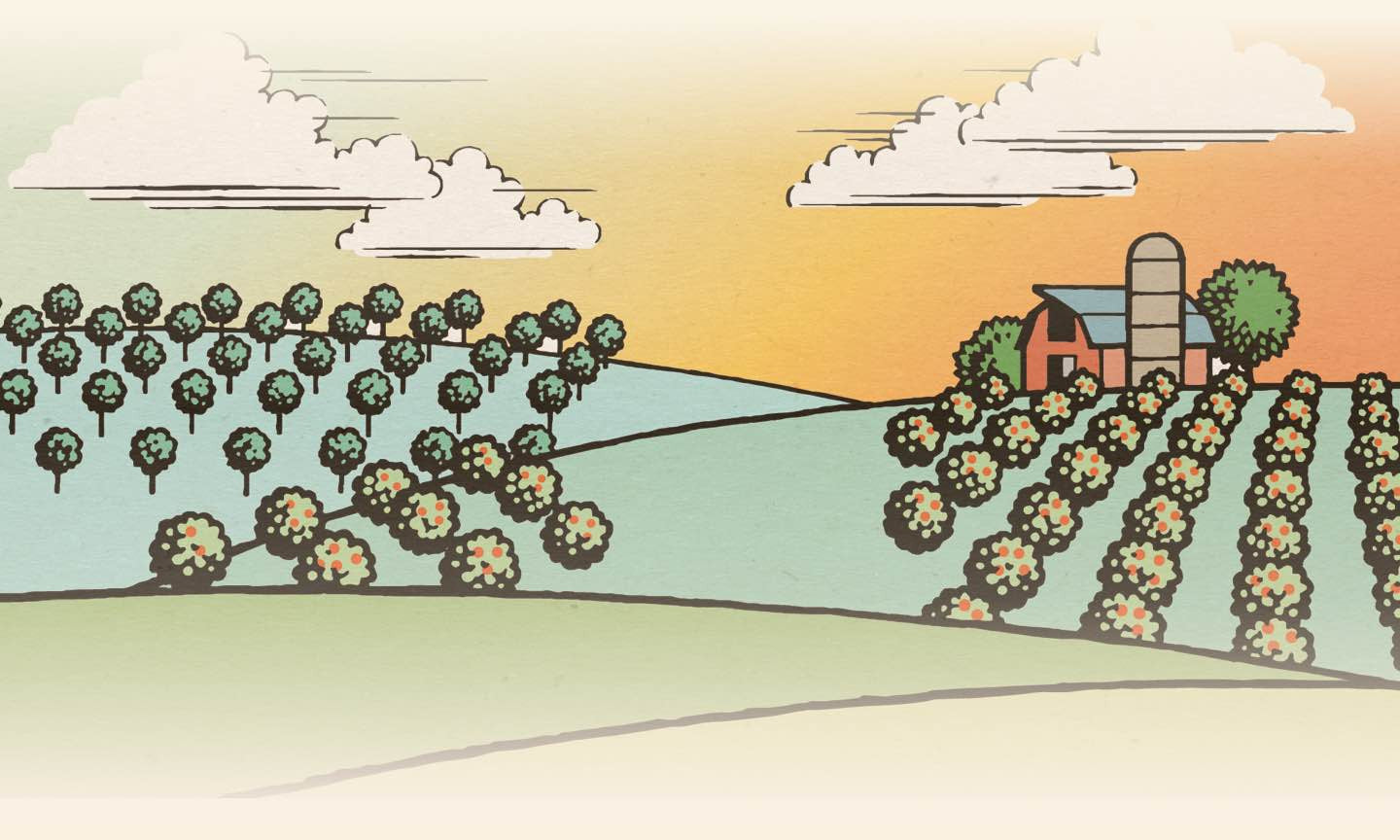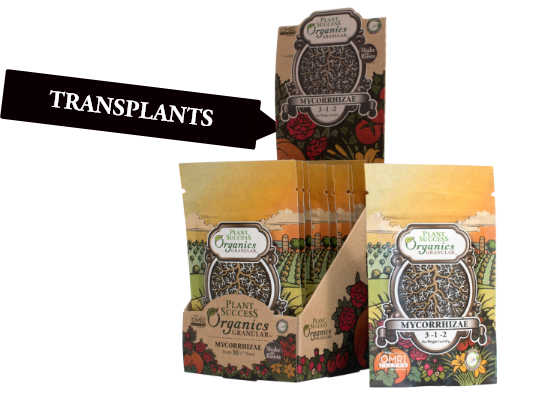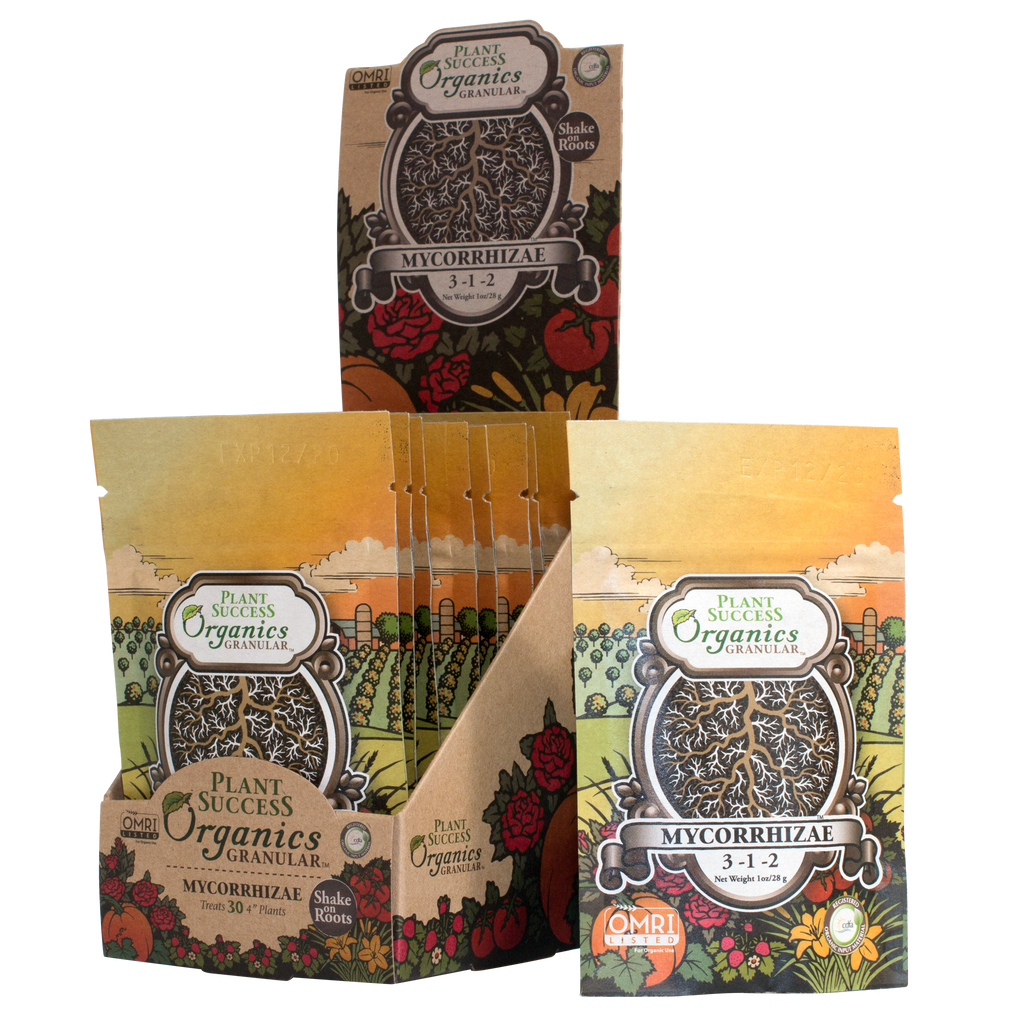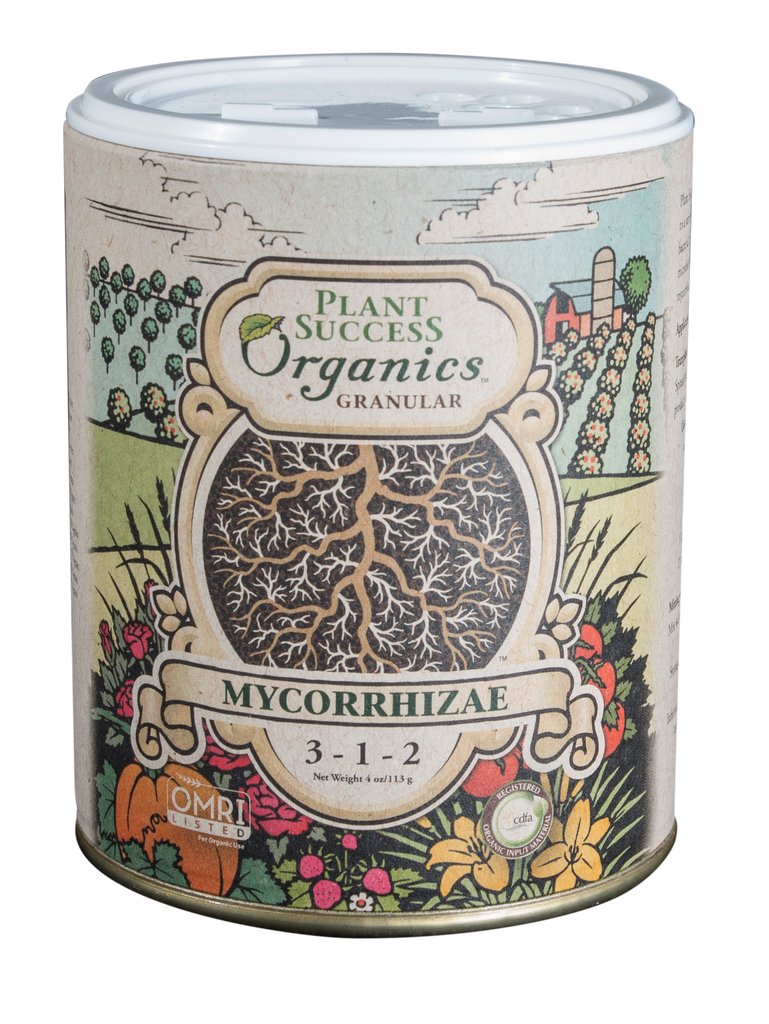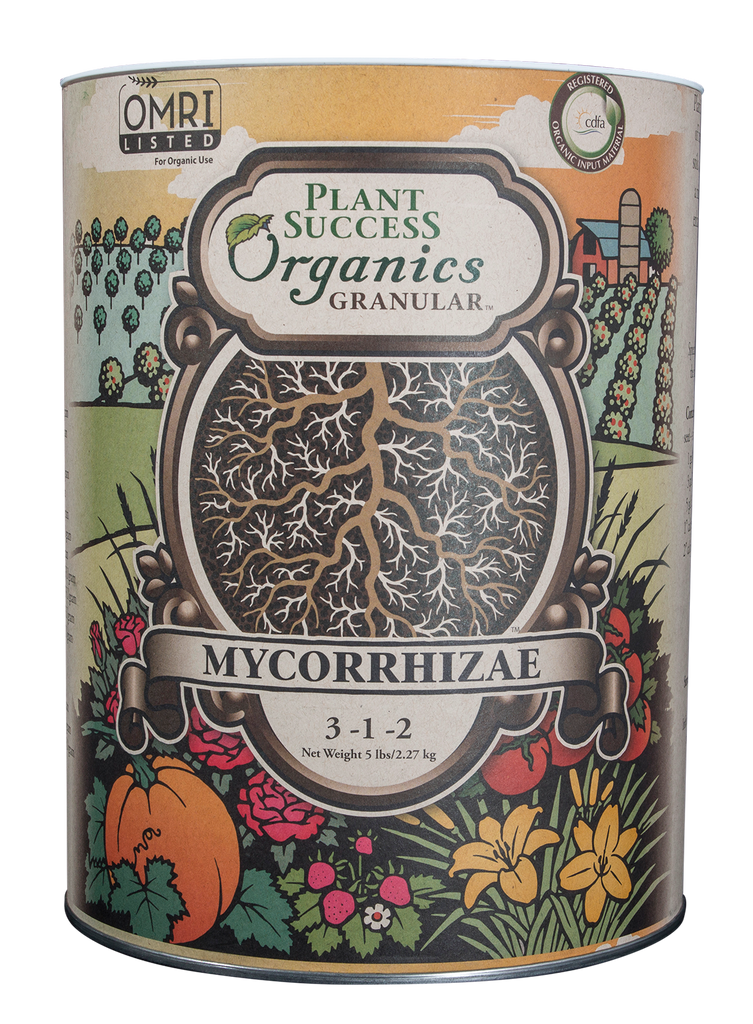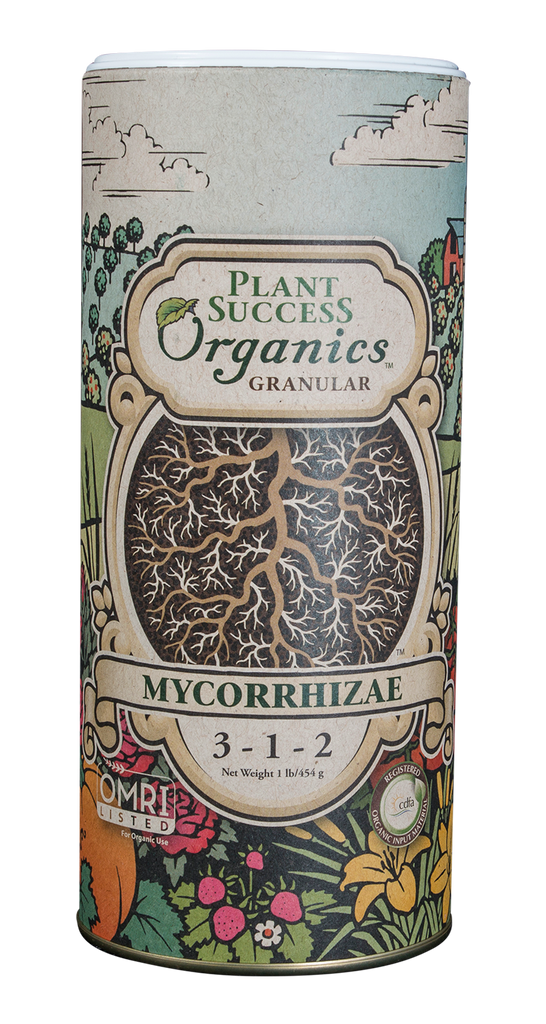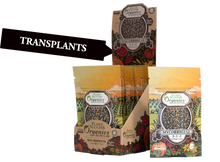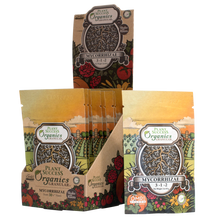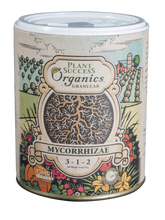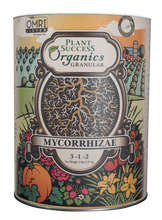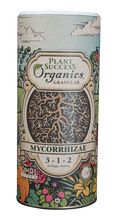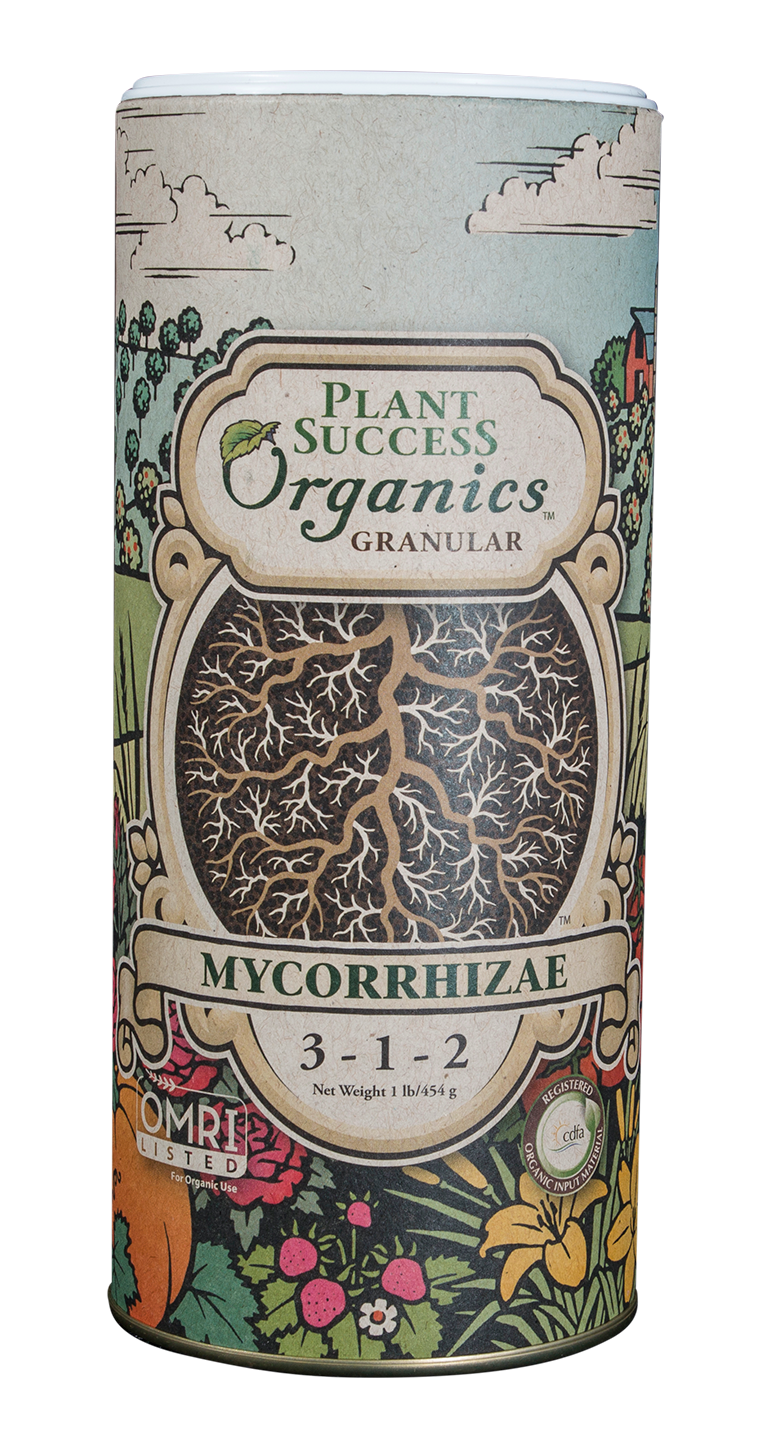Plant Success Organics Granular promotes quick plant establishment. It contains mycorrhizae, bacteria, trichoderma and an all-purpose fertilizer. The beneficial soil microbes combine symbiotically with organic plant food to enhance plant and root growth.
It is well-suited to a variety of soils, climates and plants. Granular is easily applied to new plantings by simply sprinkling it into a planting hole or mixing in potting soil. The all-purpose fertilizer provides an excellent microbe food to establish plants and beneficial organisms.
Plant Success Organics Granular™ will aid in creating a thriving and diverse soil capable of supporting maximum root and plant growth.
"Myco"-"rhiza" literally means fungus root and describes the symbiotic relationship between host plants and mycorrhizae. Mycorrhizae are a specialized fungus that colonize a plant’s root structure and enhances its reach to much farther into the soil substrate for available resources. Mycorrhizae are truly an extension of the root system and are more effective at absorbing nutrients and water than plant roots alone.
More than 95% of plant species form this symbiotic relationship with these beneficial soil fungi. Mycorrhizal fungi increase the surface absorbing area of roots up to 700 times, improving a host plant’s ability to access and utilize the soil resources. Mycorrhizae enhance nutrient uptake by increasing the absorption area of the root mass.
Mycorrhizae release enzymes into the soil that dissolve locked up nutrients, such as phosphorus, iron, and other tightly bound soil nutrients. This process of accessing locked up nutrients is very important and explains why non-mycorrhizal plants require high levels of fertility. Mycorrhizal fungi form an intricate web that captures and assimilates nutrients, which helps conserve nutrients in the soil.
Mycorrhizal Fungi Benefits
- Enhanced nutrient and water uptake
- Enhanced root growth
- Enhanced yields
- Improved tolerance of drought stress
- Improved tolerance to transplant shock
- Total Nitrogen (N) 3%
- 0.75% Water Soluble Nitrogen
- 2.25% Water Insoluble Nitrogen
- Available Phosphate (P2O5) 1%
- Soluble Potash (K2O) 2%
Derived from: hydrolyzed feather meal, meat meal, bone meal, poultry meal, blood meal, fish meal and langbenite.
Mycorrhiza -467,046 (propagules per gram)
Ectomycorrhiza
- Pisolithus tinctorius – 220,000 propagules per gram
- Rhizopogon luteolus – 5,500 props per gram
- Rhizopogon fulvigleba – 5,500 props per gram
- Rhizopogon villosullus – 5,50 props per gram
- Rhizopogon amylopogon – 5,500 props per gram
- Scleroderma cepa – 11,000 props per gram
- Scleroderma citrinum – 11,000 props per gram
- Suillus granulatus – 145,000 props per gram
- Laccaria bicolor – 29,000 props per gram
- Laccaria laccata – 29,000 props per gram
- Glomus etunicatum – 9 props per gram
- Glomus Intraradices – 9 props per gram
- Glomus mosseae – 9 props per gram
- Glomus aggregatum – 9 props per gram
- Glomus clarum – 2 props per gram
- Glomus deserticola – 2 props per gram
- Glomus monosporum – 2 props per gram
- Gigaspora margarita – 2 props per gram
- Paraglomus brazilianum – 2 props per gram
- Bacillus licheniformis – 1,700,000 CFU per gram
- Bacillus megaterium – 1,300,000 CFU per gram
- Bacillus pumilus – 1,300,000 CFU per gram
- Bacillus azotoformans – 1,100,000 CFU per gram
- Bacillus coagulans – 1,100,000 CFU per gram
- Paenibacillus polymyxa – 1,100,000 CFU per gram
- Paenibacillus durum – 1,100,000 CFU per gram
- Azotobacter chroococcum – 1,100,000 CFU per gram
- Pseudomonas aureofaciens – 1,100,000 CFU per gram
- Pseudomonas fluorescens – 1,100,000 CFU per gram
- Bacillus amyloliquefaciens – 600,000 CFU per gram
- Bacillus subtilis – 175,000 CFU per gram
- Trichoderma koningii - 400,200 CFU/gram
- Trichoderma harzianum - 266,800 CFU/gram
- Saccharomyces cerevisiae - 1,100,000 CFU/gram
Spread the granular at the bottom of the planting hole. While filling the planting hole, spread product in close proximity to the roots.
| Container Size: seed - 4 in | Amount of Granules: 1/4 tsp |
| Container Size: 1 gal | Amount of Granules: 1 tsp |
| Container Size: 3 gal | Amount of Granules: 4 tsp |
| Container Size: 5 gal | Amount of Granules: 2-4 Tbsp |
| Container Size: 1″ caliper stem | Amount of Granules: 4-6 Tbsp |
| Container Size: 2″ caliper stem | Amount of Granules: 6-8 Tbsp |
"Myco"-"rhiza" literally means fungus root and describes the symbiotic relationship between host plants and mycorrhizae. Mycorrhizae are a specialized fungus that colonize a plant’s root structure and enhances its reach to much farther into the soil substrate for available resources. Mycorrhizae are truly an extension of the root system and are more effective at absorbing nutrients and water than plant roots alone.
More than 95% of plant species form this symbiotic relationship with these beneficial soil fungi. Mycorrhizal fungi increase the surface absorbing area of roots up to 700 times, improving a host plant’s ability to access and utilize the soil resources. Mycorrhizae enhance nutrient uptake by increasing the absorption area of the root mass.
Mycorrhizae release enzymes into the soil that dissolve locked up nutrients, such as phosphorus, iron, and other tightly bound soil nutrients. This process of accessing locked up nutrients is very important and explains why non-mycorrhizal plants require high levels of fertility. Mycorrhizal fungi form an intricate web that captures and assimilates nutrients, which helps conserve nutrients in the soil.
Mycorrhizal Fungi Benefits
- Enhanced nutrient and water uptake
- Enhanced root growth
- Enhanced yields
- Improved tolerance of drought stress
- Improved tolerance to transplant shock
- Total Nitrogen (N) 3%
- 0.75% Water Soluble Nitrogen
- 2.25% Water Insoluble Nitrogen
- Available Phosphate (P2O5) 1%
- Soluble Potash (K2O) 2%
Derived from: hydrolyzed feather meal, meat meal, bone meal, poultry meal, blood meal, fish meal and langbenite.
Mycorrhiza -467,046 (propagules per gram)
Ectomycorrhiza
- Pisolithus tinctorius – 220,000 propagules per gram
- Rhizopogon luteolus – 5,500 props per gram
- Rhizopogon fulvigleba – 5,500 props per gram
- Rhizopogon villosullus – 5,50 props per gram
- Rhizopogon amylopogon – 5,500 props per gram
- Scleroderma cepa – 11,000 props per gram
- Scleroderma citrinum – 11,000 props per gram
- Suillus granulatus – 145,000 props per gram
- Laccaria bicolor – 29,000 props per gram
- Laccaria laccata – 29,000 props per gram
- Glomus etunicatum – 9 props per gram
- Glomus Intraradices – 9 props per gram
- Glomus mosseae – 9 props per gram
- Glomus aggregatum – 9 props per gram
- Glomus clarum – 2 props per gram
- Glomus deserticola – 2 props per gram
- Glomus monosporum – 2 props per gram
- Gigaspora margarita – 2 props per gram
- Paraglomus brazilianum – 2 props per gram
- Bacillus licheniformis – 1,700,000 CFU per gram
- Bacillus megaterium – 1,300,000 CFU per gram
- Bacillus pumilus – 1,300,000 CFU per gram
- Bacillus azotoformans – 1,100,000 CFU per gram
- Bacillus coagulans – 1,100,000 CFU per gram
- Paenibacillus polymyxa – 1,100,000 CFU per gram
- Paenibacillus durum – 1,100,000 CFU per gram
- Azotobacter chroococcum – 1,100,000 CFU per gram
- Pseudomonas aureofaciens – 1,100,000 CFU per gram
- Pseudomonas fluorescens – 1,100,000 CFU per gram
- Bacillus amyloliquefaciens – 600,000 CFU per gram
- Bacillus subtilis – 175,000 CFU per gram
- Trichoderma koningii - 400,200 CFU/gram
- Trichoderma harzianum - 266,800 CFU/gram
- Saccharomyces cerevisiae - 1,100,000 CFU/gram
Spread the granular at the bottom of the planting hole. While filling the planting hole, spread product in close proximity to the roots.
| Container Size: seed - 4 in | Amount of Granules: 1/4 tsp |
| Container Size: 1 gal | Amount of Granules: 1 tsp |
| Container Size: 3 gal | Amount of Granules: 4 tsp |
| Container Size: 5 gal | Amount of Granules: 2-4 Tbsp |
| Container Size: 1″ caliper stem | Amount of Granules: 4-6 Tbsp |
| Container Size: 2″ caliper stem | Amount of Granules: 6-8 Tbsp |
Frequently Asked Questions
